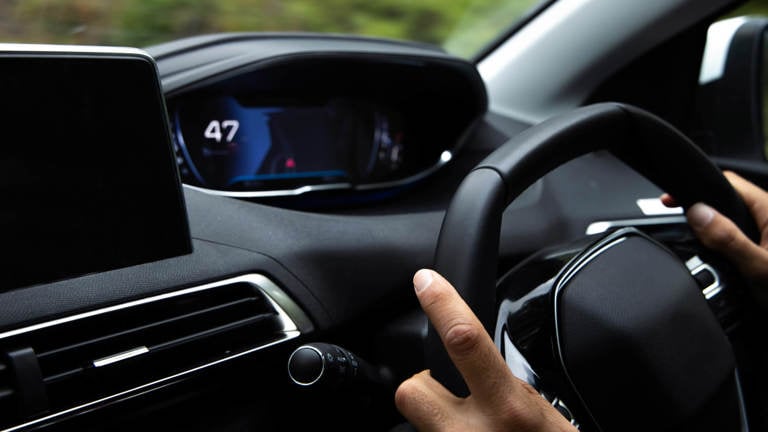As of January 2021, there were more than 20 million registered motor vehicles in Australia.1 To get behind the wheel, there are processes, laws and road rules in place, which ultimately aim to keep drivers and community members safe.
But what about etiquette?
During February and March 2024, we surveyed 2,000 Australians across Queensland, Tasmania, New South Wales, the Northern Territory, Victoria, Western Australia, and South Australia to uncover the five most important signs of etiquette and politeness on our roads.
Read on to explore the Australian Unofficial Driving Etiquette Act, 2024. Get to know Australian drivers’ expectations on the road and learn whether Aussies are following their own advice when it comes to driving etiquette (hint: some states are more consistent than others).
Download the guideAustralian Unofficial Driving Etiquette Act, 2024
The below directives, colloquially known as “driving etiquette”, outline the expected behaviour for motorists on Australian roads. They cover displays of gratitude, communicating with other drivers, and fundamental considerations to help ensure road safety and smooth traffic flow.
Rule 1 – Acknowledgement Mandate
Part 1 – In accordance with Australian road etiquette, motor vehicle operators are required to express gratitude when:
- afforded the right of way, or
- permitted to merge into a lane.
This formal gesture is performed by promptly executing a courteous wave as an acknowledgment of appreciation, where safe to do so.
Translation: when another driver goes out of their way to let you in or give way for you on the road, you give them a casual wave to say thanks.
Rule 2 – Salutation Mandate
Part 1 – This pertains to the act of extending the index finger from the steering wheel to salute an oncoming vehicle. It is colloquially referred to as the “One Finger Wave”.
Part 2 – This gesture is sufficient to display respect or acknowledgement between drivers on public roads.
Note: Refer to Rule 1 – Acknowledgment Mandate for examples of some instances where this gesture may also be deployed.
Translation: a simple lift of the index finger off the steering wheel is acceptable to say hi to passing motorists.
Rule 3 – Adherence to Zipper Merge Methods
Part 1 – In scenarios involving lane closure or traffic congestion, the recommended practice for merging is the Zipper Merge Method.
1A – Definition: Zipper Merge Method. This procedural requirement necessitates motorists to yield to merging vehicles into an open lane during a traffic jam.
Part 2 – It is incumbent upon drivers, in accordance with the stipulations of Australian traffic etiquette, to comprehend that the act of allowing one vehicle to merge in congested traffic does not impose an obligation to extend the same privilege to subsequent vehicles.
Translation: when in heavy traffic and cars are merging into your lane, you only need to let one car in at a time.
Rule 4 – Recognising Pedestrian Right of Way Regardless of Public Crossings
Part 1 – Motor vehicle operators must recognise the sacrosanct right of pedestrians to have the right of way, particularly;
- at marked crosswalks, where Australian road laws dictate that drivers should yield to pedestrians attempting to cross the road, and
- in the absence of designated crosswalk demarcations and a pedestrian is in the act of crossing the road or about to step out onto the road surface.
Translation: bring your car to a stop to let people cross the road safely, whether there’s a marked crossing or not.
Rule 5 – Reverse Parallel Parking Edict
Part 1 – If a motorist engages in the act of reverse parallel parking, it is imperative for other road users to exercise circumspection, refraining from impeding the completion of said parking action.
Translation: wait for another driver to finish reversing into a car park before driving around them.
How does your state compare?
There’s a clear gap between drivers’ awareness of the unofficial rules and their actions on the road, with motorists in states such as Queensland and South Australia aware that giving another driver a ‘thank you’ wave is a common courtesy (90%), but only 61% and 60% of people respectively always engage in this behaviour.
The same applies for the other unofficial etiquettes, with an average 25% gap between awareness and action, begging the question – do Aussies put their money where their mouth is when it comes to being courteous on the road?
Which of the below driving behaviours and etiquette are you aware of?
| NSW | VIC | QLD | WA | SA | Tas & NT | |
| Giving another driver a wave as a ‘thank you’ (i.e. for letting you merge into their lane, give you right of way, etc.) | 85% | 89% | 90% | 89% | 90% | 92% |
| Giving another driver a wave ‘hello’ or acknowledgement | 61% | 60% | 69% | 74% | 67% | 67% |
| Taking turns merging into open lanes when stuck in a traffic jam | 73% | 69% | 79% | 70% | 75% | 87% |
| Yielding to pedestrians outside of pedestrian traffic lights or marked crossroads | 54% | 54% | 56% | 51% | 49% | 49% |
| Waiting for the car in front to complete reverse / parallel parking before driving past | 84% | 79% | 88% | 82% | 81% | 87% |
How frequently do you engage in the below driving behaviours and etiquette?
| For those who answered ‘every time’ | NSW | VIC | QLD | WA | SA | Tas & NT |
| Giving another driver a wave as a ‘thank you’ (i.e. for letting you merge into their lane, give you right of way, etc.) | 60% | 60% | 61% | 60% | 60% | 63% |
| Giving another driver a wave ‘hello’ or acknowledgement | 32% | 36% | 34% | 29% | 33% | 34% |
| Taking turns merging into open lanes when stuck in a traffic jam | 51% | 51% | 51% | 48% | 41% | 58% |
| Yielding to pedestrians outside of pedestrian traffic lights or marked crossroads | 39% | 35% | 43% | 44% | 27% | 56% |
| Waiting for the car in front to complete reverse / parallel parking before driving past | 55% | 53% | 53% | 56% | 44% | 63% |
1 Source: Australian Bureau of Statistics – Motor Vehicle Census, Australia, January 2021



